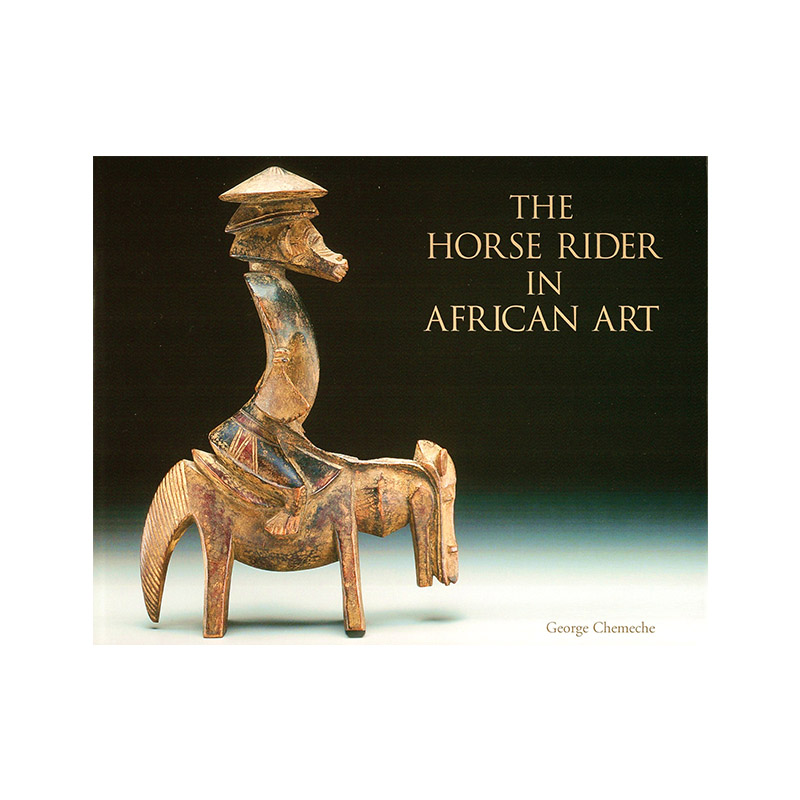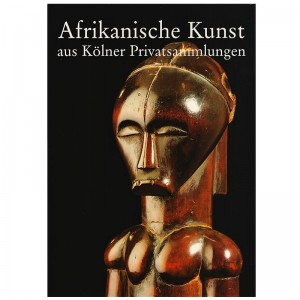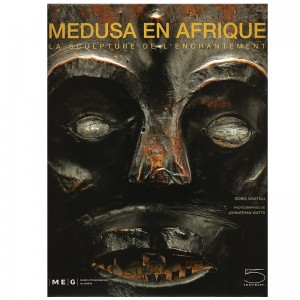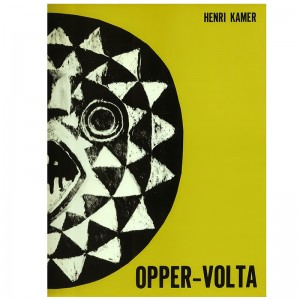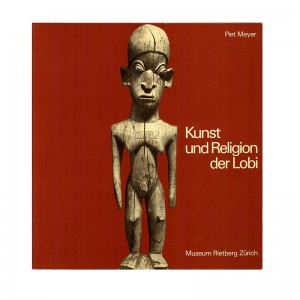THE HORSE RIDER IN AFRICAN ART
Material Type: general or thematic Work
Publisher: Antique Collectors’ Club, Woodbridge, 2011. Hardcover cardboard editor of canvas with title in gilt on black, illustrated dust jacket in good condition color, size: 28 x 24 cm (oblong)
Content: 384 p, 2 ill. b / w, 334 ill. col.
Additional information: bilingual text in Italian and English
State of the work: Very good condition
Description
The horses are very rare in Africa. The few that are found is located in western Sudan, from the land of the Sahara and the Sahel down on the edge of tropical forests, and belong to the king, the warrior chief or notable people. Because of the dense humidity of the rainforest and the deadly tsetse fly, only small numbers of horses survive. Yet the sculptures rider and horse are common among the Dogon, Djenne, Bamana, Senufo and Yoruba. The Akan–Asante Kotoko people of Ghana and Chad have produced many small brass and bronze cast sculptures. Some of these artists could barely even having seen a horse. This visually stunning book presents a wealth of African art depicting the horse and rider in a variety of shapes, Epa masks, divination cuts Yoruba sculptures Dogon and Senufo. In Mali, Bamana ethnic groups, and Boso Somono continue to celebrate puppets masquerade parties.
Characteristics of the works in the various museums in Africa and Europe, including the Royal Museum for Central Africa in Tervuren in Belgium; The Afrika Museum in Berg en Dal Netherlands; the Quai Branly Museum in Paris; Rietberg Museum in Zurich; The British Museum in London; Antologia the National Museum of Lisbon and the National Museum in Lagos, Nigeria.
Additional information
| Weight | 2170 g |
|---|---|
| Dimensions | 28 × 24 cm |
Related Products
-
AFRIKANISCHE KUNST
50,00 €Subtitle: aus Kölner Privatsammlungen Authors: W. Schmalenbach / KORINTHENBERG G. Material Type: Exhibition Catalogue. 35th Art Fair in West Germany, Cologne: 2004 Publisher: Koelnmesse GmbH, Cologne, 2004. Bound with black draped editor binding with title in white engraved recessed under jacket illustrated color new, in-4, size: 21.5 x 30.5 cm, ISBN 3-00-013510 -3 Content: 96…
-
MEDUSA EN AFRIQUE
47,00 €Subtitle: The sculpture of enchantment Author: B. WASTIAU Material Type: Exhibition Catalogue. Ethnographic Museum, Geneva: 14 November to 30 December 2009 Publisher: 5 Continents Editions, Milan, 2008. Hardcover editor cardboard color illustrated dust jacket tucked illustrated in color, in-8, size: 24.5 x 29 cm, ISBN 978-88-7439-468-5 Content:. 240 p, 169 ill. col., biblio., notes and…
-
OPPER-VOLTA
100,00 €Authors: H. KAMER / TRIANDE T. Material Type: Exhibition Catalogue. Studio 44 - Passage 44, Brussels: 5 to 23 September 1973. Publisher: André De Rache, Brussels, 1973. Paperback, 4to, dimensions: 22.5 x 29 cm. Content: 184 p, 106 ill.. b / w, 4 ill. col., 8 pictures col. 5 pl.n / b, 3 cards. Additional…
-
KUNST UND RELIGION DER LOBI
125,00 €Authors: P. MEYER / WETTSTEIN L. / KAUF B. Material Type: general or thematic Work Publisher: Museum Rietberg, Zurich, 1981. Paperback, size: 20.5 x 22 cm. Content: 184 p, 350 ill.. b / w, 19 ill. col., 1 shots, 2 maps, biblio., glossary. Additional information: original edition, limited release. Book exhausted become rare and highly…
60,00 €
1 in stock



